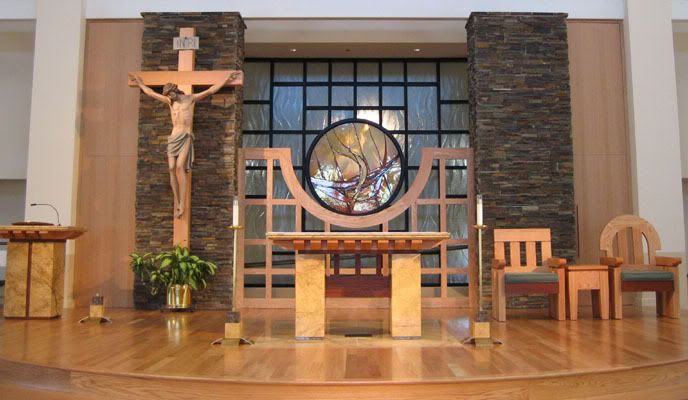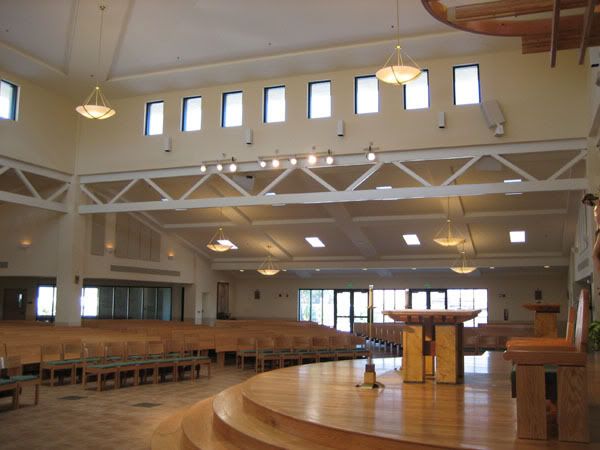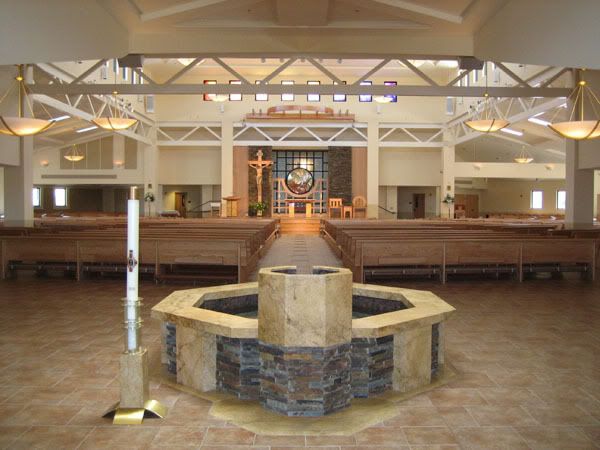WhiBal Card for Wedding? church pixs..
I am kinda new to this forum, so please be patient if I ask dumb questions.. I am learning. 
I was at a wedding this weekend, and was paying close attention to the photographer doing his job (while I was suppose to be paying attention to the ceremony..) and I noticed that he was not using his flash. I am using the rules were no flash during the ceremony because he turned on his flash as soon as the ceremony was over. Anyway, I noticed that he was taking shots, and when he would go to a different angle (like following them to the candle, or just going to the opposite side of the room), he would take out a gray card, take a quick picture of it, and start shooting where he is at.
I did some research on this little card he was using, and came accross the WhiBal Card. So is this just for setting the white balance? Or can it do other things? How would these pictures come out without a flash indoors? I went to the church website and got these pictures of the church/lighting.
Sorry for the long post! Thanks...
1.

2.

3.

I was at a wedding this weekend, and was paying close attention to the photographer doing his job (while I was suppose to be paying attention to the ceremony..) and I noticed that he was not using his flash. I am using the rules were no flash during the ceremony because he turned on his flash as soon as the ceremony was over. Anyway, I noticed that he was taking shots, and when he would go to a different angle (like following them to the candle, or just going to the opposite side of the room), he would take out a gray card, take a quick picture of it, and start shooting where he is at.
I did some research on this little card he was using, and came accross the WhiBal Card. So is this just for setting the white balance? Or can it do other things? How would these pictures come out without a flash indoors? I went to the church website and got these pictures of the church/lighting.
Sorry for the long post! Thanks...
1.

2.

3.

0
Comments
Where the products like the WhiBal Card and QPCard factor in is providing a benchmark and common ground for measuring (somewhat) the white balance and exposure.
The white balance can either be set in-camera using the protocol of your camera against a standard white target, or you can just shoot the card and develop the white balance later in your RAW image processing software. In either case, the WhiBal Card (for instance) gives you a standard color neutral target to work against.
Likewise, a card/target that has white-gray-black zones gives you three pieces of the exposure pie:
The White component should equal the maximum highlight value (or so).
The Gray component should be centered in your exposure.
The Black component should equal the darkest shadow or black point (or so).
The important thing is the the target gets you a consistant starting point if you develop a work flow around the values captured by the camera of the target.
I have not established one particular product as head-over-heels better than another as a true standard so get something and determine what that standard means to you and your work flow and style.
Moderator of the Cameras and Accessories forums
http://www.photovisionvideo.com/target.html
definitely a worthwhile investment! get a large one (i primarily use the 34"), the dinky 6' is a waste of time and money, IMO.
when using a target like this, be sure to set your manual wb with an image of the target filling the frame. save this image along with an image of it taking up about 1/3 - 1/4 of the frame. i incorporate this into my personal workflow because it gives me references for a) the target itself and b) the target as it relates to its surroundings. good luck!
- my photography: www.dangin.com
- my blog: www.dangin.com/blog
- follow me on twitter: @danginphoto
I preparing for my thread about white balancing tools, I shot with Expodiscs, white cards and a gray reflector disc from www.balancesmarter.com.
I found that the "correct exposure" of the non-specular gray reflector, gave me an RGB histogram with each spike for red, green and blue centered in the middle of the my RGB histogram display on my 40D. The red, green and blue spikes should line up perfectly, dead center.
In addition, my photos shot of Kodak gray scales, this way, show a full range of tones from black to white as seen in the end of this post
If the exposure is not accurate, the gray scale is pushed toward black or toward white as you mention. I was impressed with how precise exposure needs to be for the very best images. Within 1/3 of stop is my estimate.
Moderator of the Technique Forum and Finishing School on Dgrin